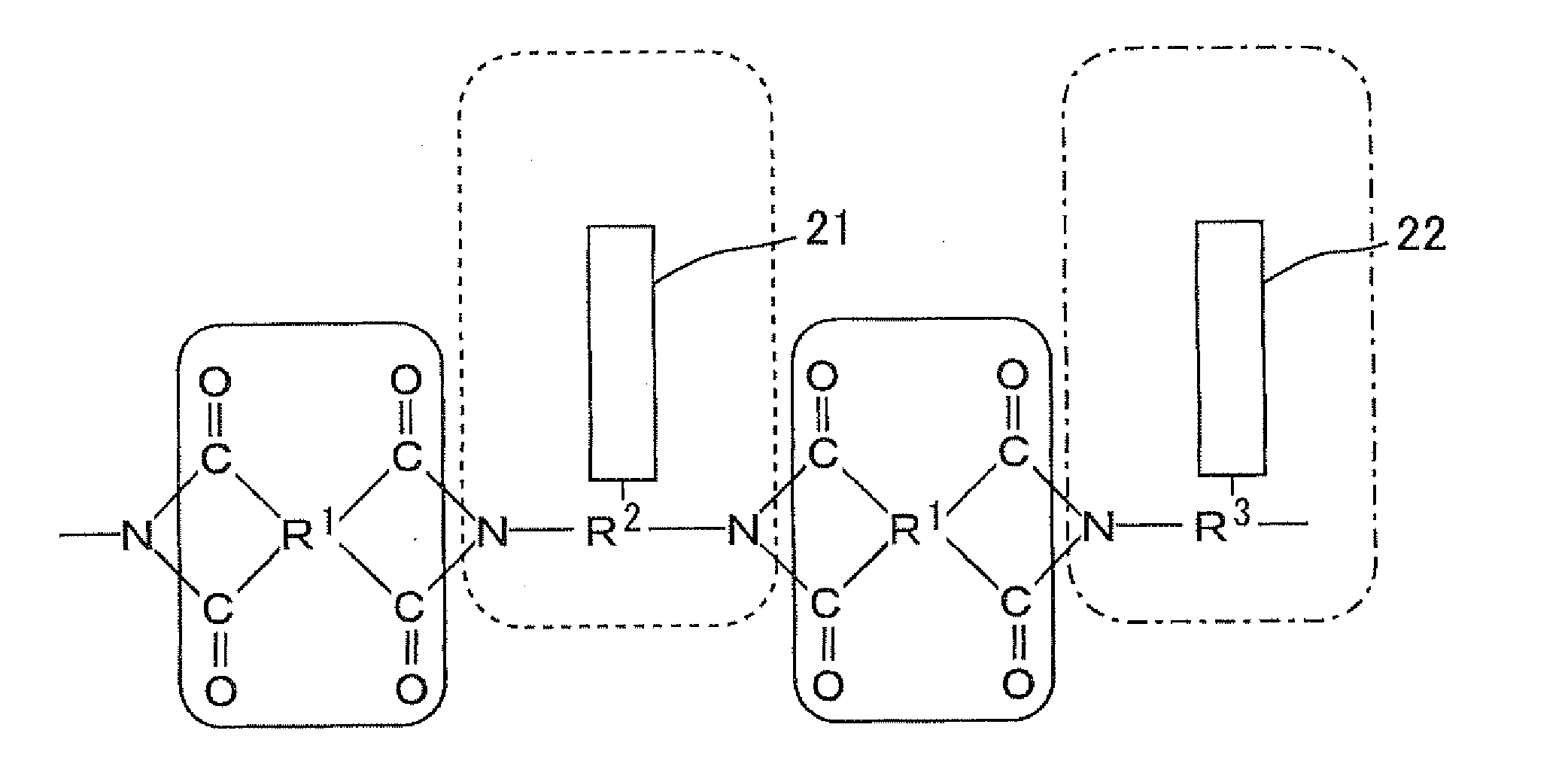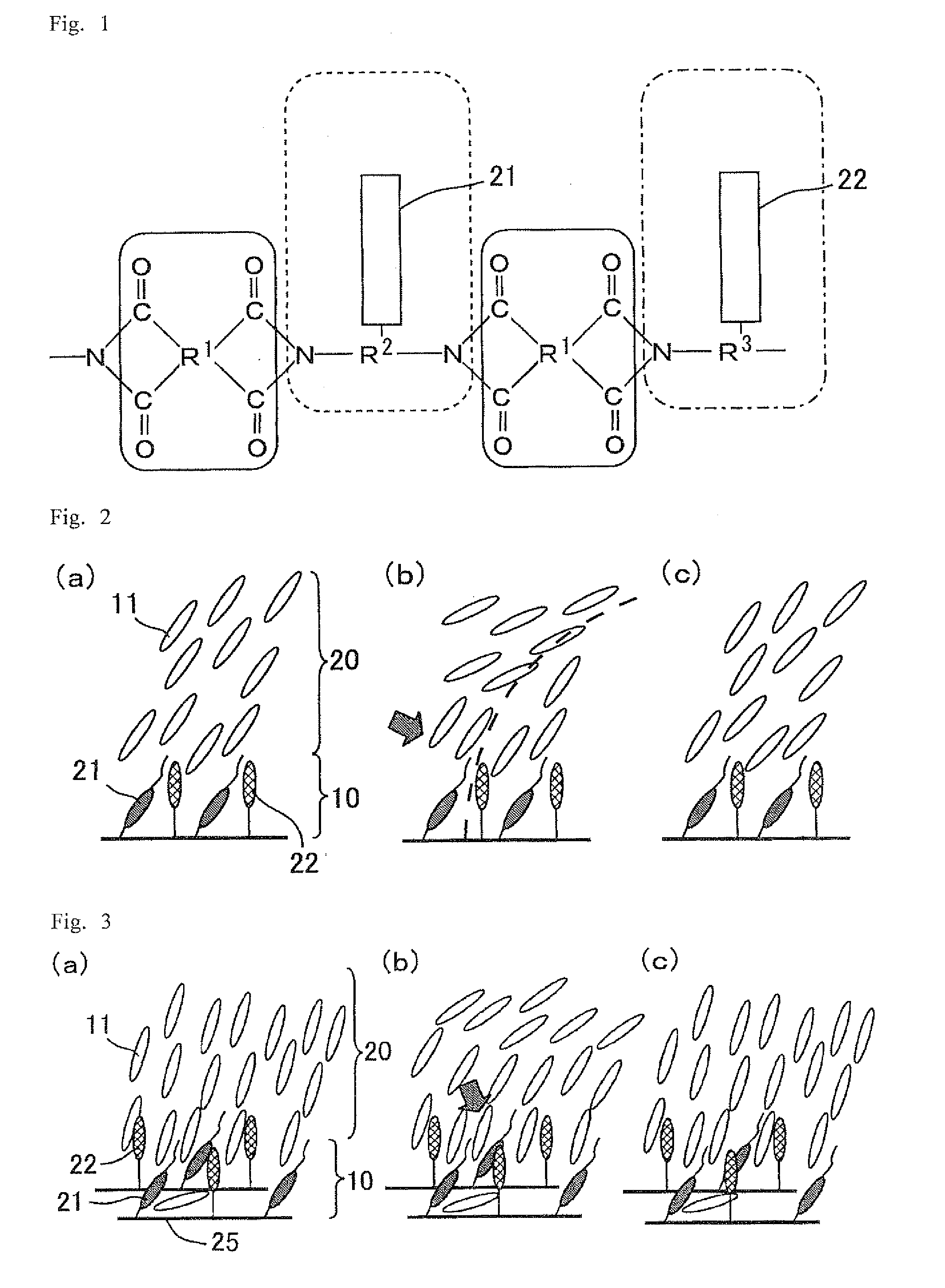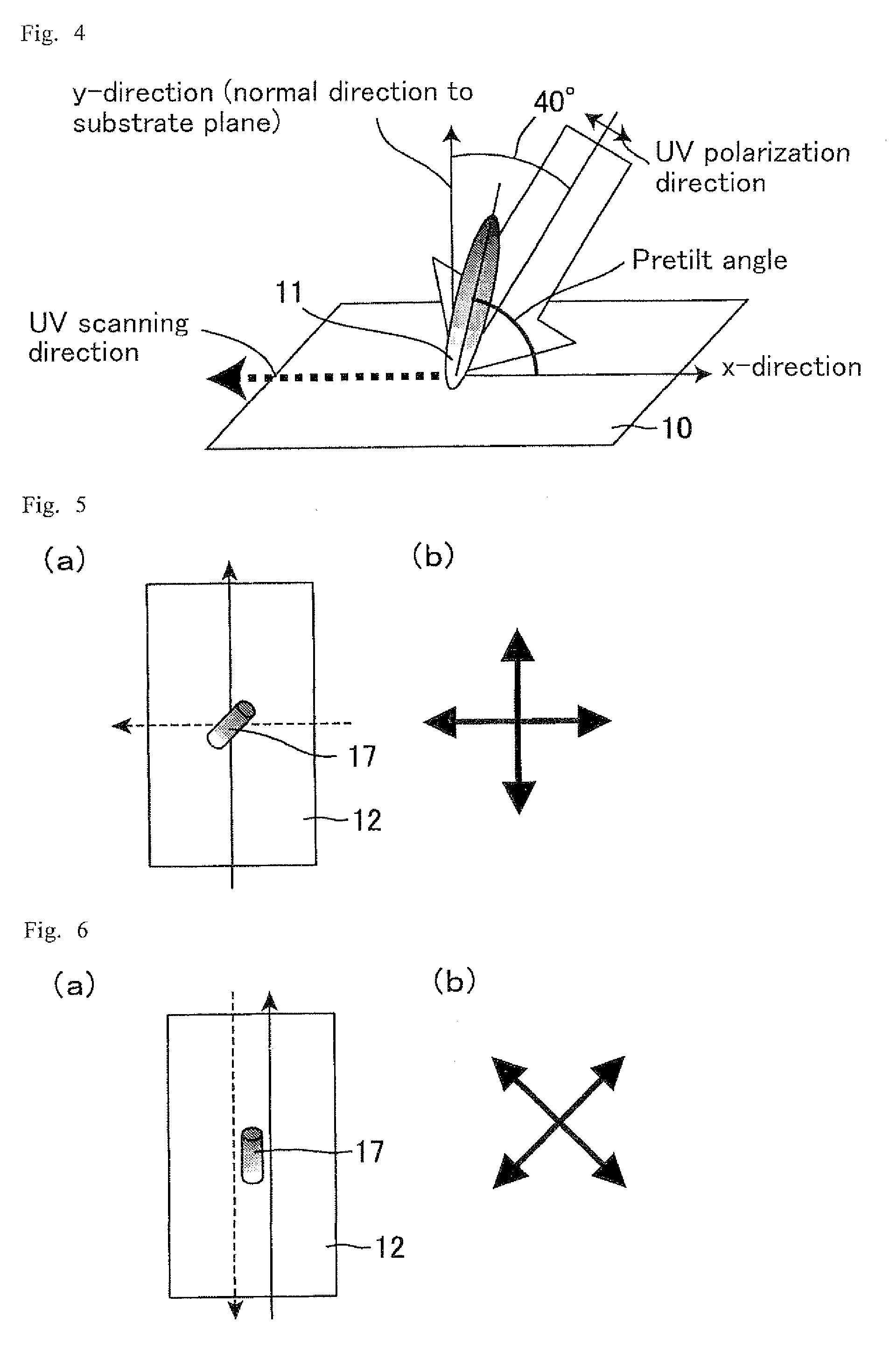Liquid crystal display device and polymer for aligning film material
a liquid crystal display and film material technology, applied in the field of liquid crystal display devices and polymers for aligning film materials, can solve the problems of generating image sticking, reducing the uniformity of alignment, and insufficient homopolymer or copolymer of only the aligning film material, etc., to suppress the ac image sticking, effective drive, and stable adjustment
- Summary
- Abstract
- Description
- Claims
- Application Information
AI Technical Summary
Benefits of technology
Problems solved by technology
Method used
Image
Examples
embodiment 1
[0097]The present Embodiment is mentioned in the following order: 1. alignment film material: 2. preparation method of alignment film; 3. basic operations of liquid crystal display device; 4. production method of liquid crystal display device; and 5. evaluation test of AC image sticking
1. Alignment Film Material
[0098]The alignment film material of the present Embodiment includes a polymer essentially containing a first constitutional unit and a second constitutional unit. The first constitutional unit exhibits a property of controlling alignment of liquid crystal molecules by photoirradiation. The second constitutional unit exhibits a property of controlling alignment of liquid crystal molecules regardless of photoirradiation. More particularly the first constitutional unit has a side chain containing a photofunctional group, and the second constitutional unit has a side chain containing a vertical alignment functional group. Thus, the side chain of the second constitutional unit co...
PUM
| Property | Measurement | Unit |
|---|---|---|
| pretilt angle | aaaaa | aaaaa |
| pretilt angle | aaaaa | aaaaa |
| pretilt angle | aaaaa | aaaaa |
Abstract
Description
Claims
Application Information
 Login to View More
Login to View More - R&D
- Intellectual Property
- Life Sciences
- Materials
- Tech Scout
- Unparalleled Data Quality
- Higher Quality Content
- 60% Fewer Hallucinations
Browse by: Latest US Patents, China's latest patents, Technical Efficacy Thesaurus, Application Domain, Technology Topic, Popular Technical Reports.
© 2025 PatSnap. All rights reserved.Legal|Privacy policy|Modern Slavery Act Transparency Statement|Sitemap|About US| Contact US: help@patsnap.com



